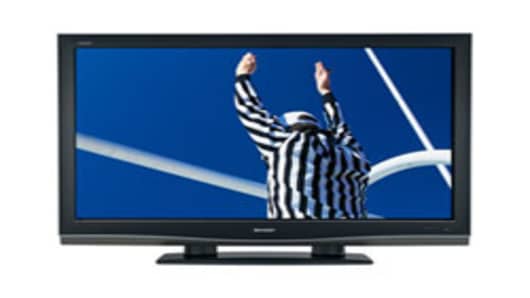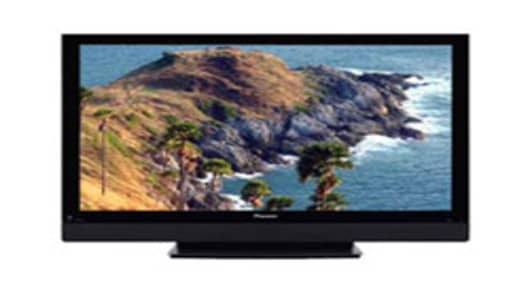HDTV Primer:
Enter the three-ring circus that is the Consumer Electronics Show, and you’ll find yourself right in the middle of HD world, a place where the pictures are pristine and the volume is extremely high. This year, in particular, you’d be struck by bigger screens, more models using LEDs as light sources to provide better color, and faster refresh rates on LCDs, which helps reduce issues the technology has had with action scenes and fast motion. (That’s right -- today’s TVs are expensive high-tech devices.)
Those new televisions will surely hit stores later this year. But if you can’t wait, there are plenty of great HDTVs already on the market. And here’s a little secret: Now is a great time to save money on a new HDTV—after all, the holidays are over, the Super Bowl isn’t for another month and retailers still have sets to sell. When you’re ready to buy, here’s what you need to know.
Prices:
HDTVs, particularly large-screen HDTVs, are a big-ticket item. Your budget goes a long way in narrowing down the size and type of TV you buy. Generally speaking, you can expect to pay where from $1,000 on up, depending on the size and technology you choose.
Technologies:
Types of HDTV: Design preference has a great deal of influence on the HDTV you choose. Many consumers prefer the elegance of a flat panel. However, projection sets, while diminishing in popularity around the world, still sell well in the U.S. largely because they offer bigger screen sizes at a better price.
Direct View CRTs: The traditional tube TV, HDTV sets range from $500 to $1,500. These actually have the best picture, but have a limited screen size, are bulky and extraordinarily heavy.
Flat Panel TVs: Either plasma or LCD, these sets range in price from $500 on up for LCDs and $1,300 on up for plasmas, depending on the size. Plasmas are cheaper than comparably sized LCDs, but they’re also heavier and could soon be relegated to the back seat as LCDs improve and come down in price. In fact, Sony has already phased out its plasma line.
Projection TVs: These come in three flavors: DLP, LCD and LCoS, and offer a bigger screen for less money. These TVs go all the way up to 70 inches and can cost from $1,500 to $5,000 or more, depending on the size.
Fro
nt Projectors: Projectors, which start around $1,000 and are about the size of a shoebox, are great for movie fanatics. You can get the biggest picture with a front projector, but you’ll need a white wall or screen and may need someone to set it up for you.
Resolution: This gives you an idea of the detail you will see in a TV’s picture, and is described by the number of pixels, as in 1080 followed by interlaced (i), which means you only see every other line at one time, or progressive (p), which means you see every line.
For example:
480i: You only see 240 lines at a time. This is traditional standard definition TV.
480p: 852 x 480. You see all 480 lines of resolution. This is enhanced definition, the typical resolution of a DVD.
720p: 1,280 x 720 progressive (HDTV).
1080i: 1,920 x 1,080 interlaced (HDTV).
1080p: 1,920 x 1,080 progressive (true HDTV). There is little real 1080p content available, except for Blu-Ray discs or HD-DVDs.
The Test:
1) Look at all the televisions on the showroom floor and make sure they’re showing actual HDTV from a cable or satellite hookup.
2) Adjust the TVs brightness—many showrooms have it turned up all the way.
3) Check blacks to make sure they’re solid and that subtle shades of gray aren’t muddy.
4) Watch night scenes to see if the TV holds detail.
5) Watch sports or an action DVD to make sure there’s no blurring of the picture when fast motion is on the screen.
6) Since most programming is still standard definition, check out regular TV to make sure the set handles it well.
7) Look at the edges of brightly colored objects to make sure there’s a minimum amount of video “noise.”
8) Check the viewing angle. How far can you move to the side before you lose the picture?
9)Try the remote control. Is it easy to use? Is the TV’s interface intuitive or easy to figure out?
Peripherals:
Before you get to the store, make a list of the devices you’ll be connecting to the TV and make sure the one you buy has the proper connections. And speaking of connections, you should also know that different devices have different inputs. Here’s a list of the most common.
HDMI -- A very high quality connection found on new DVD players and HDTV receivers.
DVI -- The very high quality Digital Visual Interface is found on many HDTV receivers, Windows Media Center devices and newer DVD players.
FireWire/IEEE 1394/iLink -- Found on some HDTV receivers and D-VHS players, this high quality connection also allows users to connect a digital camcorder to a TV.
Component Video -- A very good connection found on progressive scan DVD players, HDTV receivers and Windows Media Center devices.
RGB -- This good quality connection is generally found on computers and projectors, as well as PCs.
S-Video -- The mid-level quality connection commonly found on cable or satellite boxes, VCRs, S-VHS players and some games.
Composite Video -- Commonly known as yellow video, this lower quality connection is generally found on VCRs, cable and satellite boxes, older DVD players and some game consoles.
Connectivity:
You’ll need an HD box from your cable or satellite provider and, eventually, your telephone company. Remember, just because you have digital cable doesn’t mean you’re ready for HDTV. Most cable and satellite companies can provide the equipment necessary to receive an HD signal—some even offer it free if you’re already a digital cable subscriber. You can also receive signals over an antenna, but you’ll only be able to receive free TV.
And don’t forget ...
Generally speaking, you should sit three feet away from the TV for every foot of screen height. If the screen is two feet high, for example, you should sit about six feet away to get the full effect. If the room has a lot of ambient light, make sure the TV you’re considering, particularly if it’s LCD or plasma, is designed to deal with it. Otherwise, the screen could look washed out. Oh, and if you’re thinking about mounting the TV on the wall, you’d better really like where you put it, otherwise you’ll have to fill the holes when you move it.
NOTE: Prices are MSRP. Our recommendation: Check the prices for these TVs at various online outlets before heading to the showroom.






